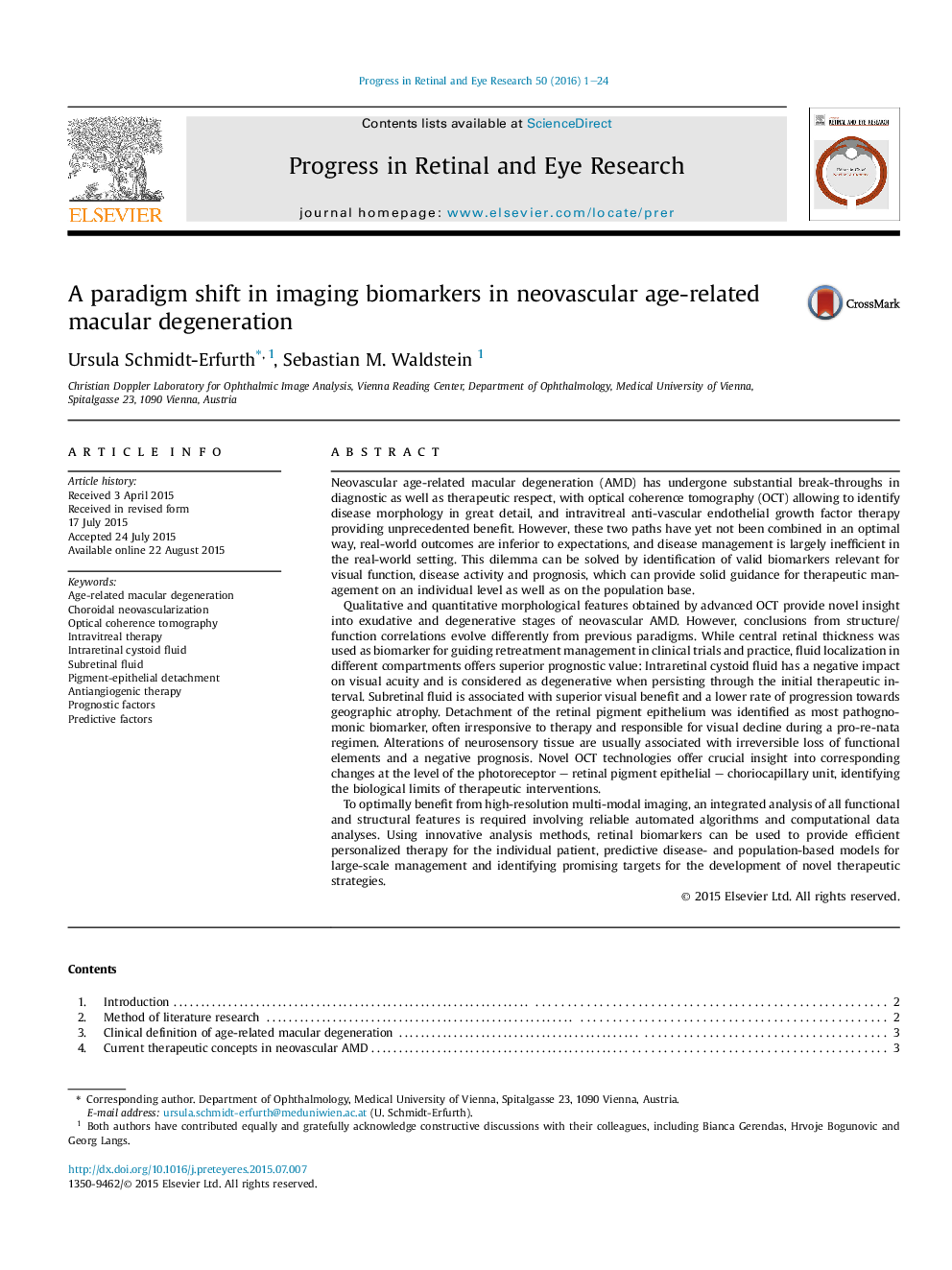| کد مقاله | کد نشریه | سال انتشار | مقاله انگلیسی | نسخه تمام متن |
|---|---|---|---|---|
| 4031897 | 1602816 | 2016 | 24 صفحه PDF | دانلود رایگان |
Neovascular age-related macular degeneration (AMD) has undergone substantial break-throughs in diagnostic as well as therapeutic respect, with optical coherence tomography (OCT) allowing to identify disease morphology in great detail, and intravitreal anti-vascular endothelial growth factor therapy providing unprecedented benefit. However, these two paths have yet not been combined in an optimal way, real-world outcomes are inferior to expectations, and disease management is largely inefficient in the real-world setting. This dilemma can be solved by identification of valid biomarkers relevant for visual function, disease activity and prognosis, which can provide solid guidance for therapeutic management on an individual level as well as on the population base.Qualitative and quantitative morphological features obtained by advanced OCT provide novel insight into exudative and degenerative stages of neovascular AMD. However, conclusions from structure/function correlations evolve differently from previous paradigms. While central retinal thickness was used as biomarker for guiding retreatment management in clinical trials and practice, fluid localization in different compartments offers superior prognostic value: Intraretinal cystoid fluid has a negative impact on visual acuity and is considered as degenerative when persisting through the initial therapeutic interval. Subretinal fluid is associated with superior visual benefit and a lower rate of progression towards geographic atrophy. Detachment of the retinal pigment epithelium was identified as most pathognomonic biomarker, often irresponsive to therapy and responsible for visual decline during a pro-re-nata regimen. Alterations of neurosensory tissue are usually associated with irreversible loss of functional elements and a negative prognosis. Novel OCT technologies offer crucial insight into corresponding changes at the level of the photoreceptor – retinal pigment epithelial – choriocapillary unit, identifying the biological limits of therapeutic interventions.To optimally benefit from high-resolution multi-modal imaging, an integrated analysis of all functional and structural features is required involving reliable automated algorithms and computational data analyses. Using innovative analysis methods, retinal biomarkers can be used to provide efficient personalized therapy for the individual patient, predictive disease- and population-based models for large-scale management and identifying promising targets for the development of novel therapeutic strategies.
Journal: Progress in Retinal and Eye Research - Volume 50, January 2016, Pages 1–24
